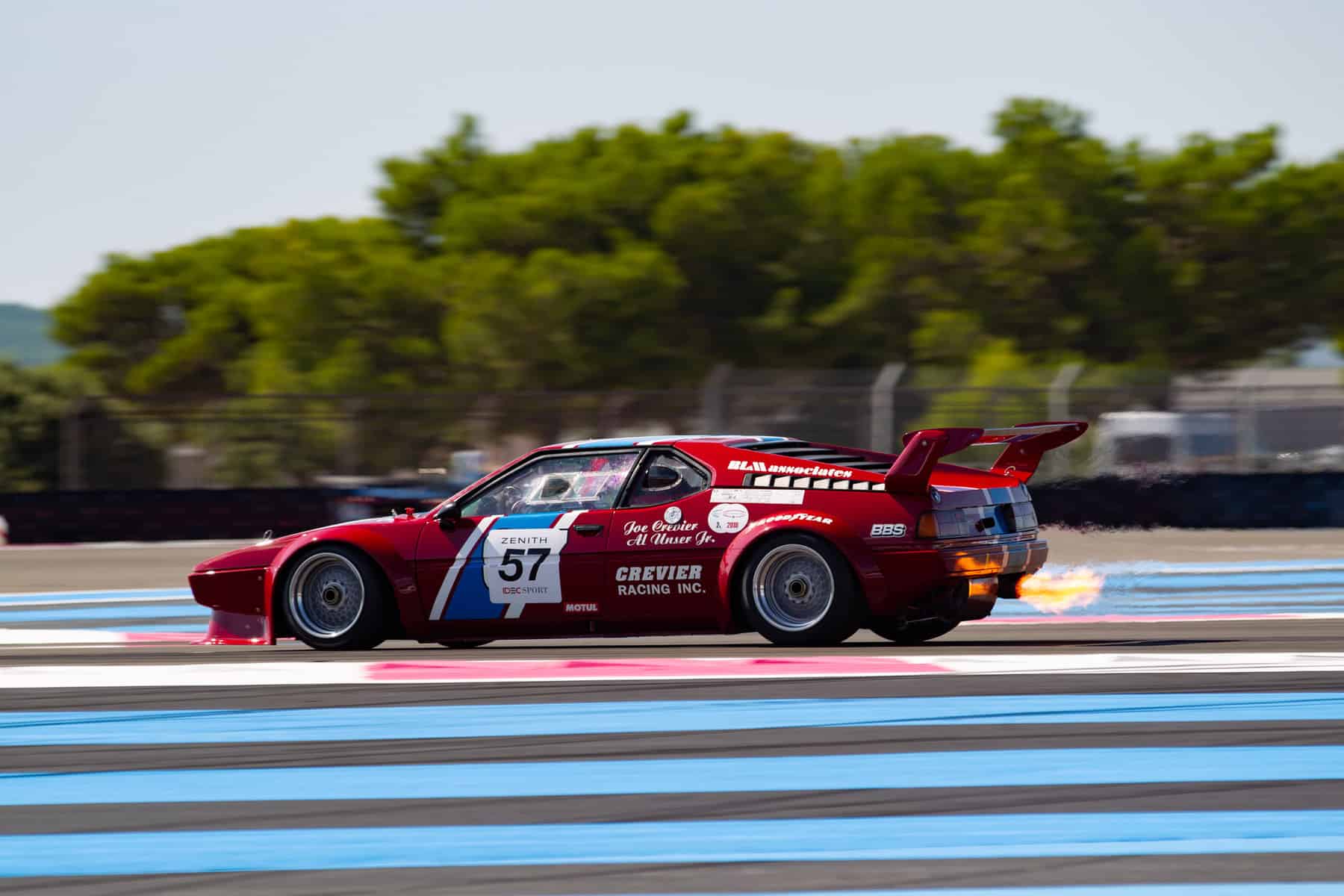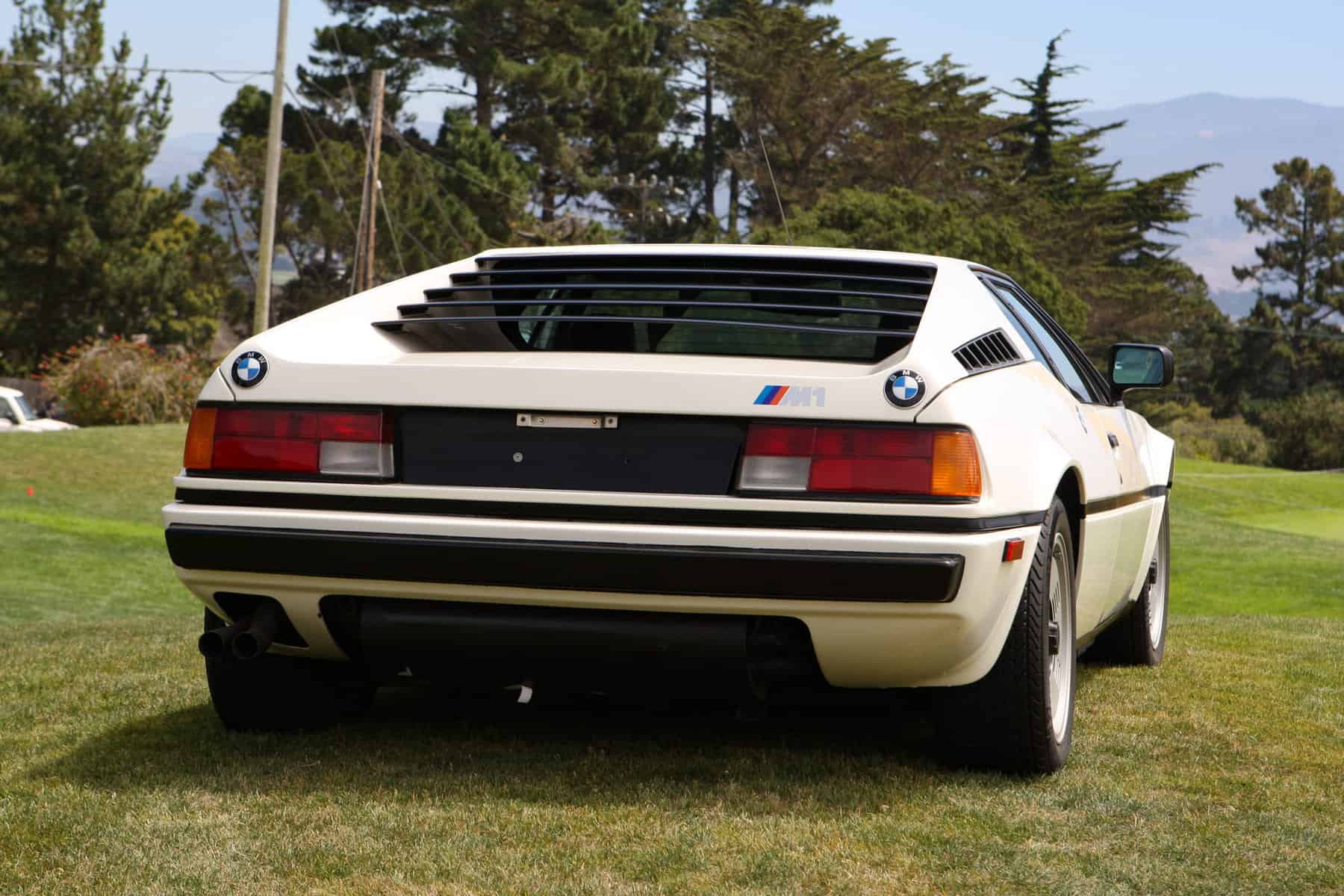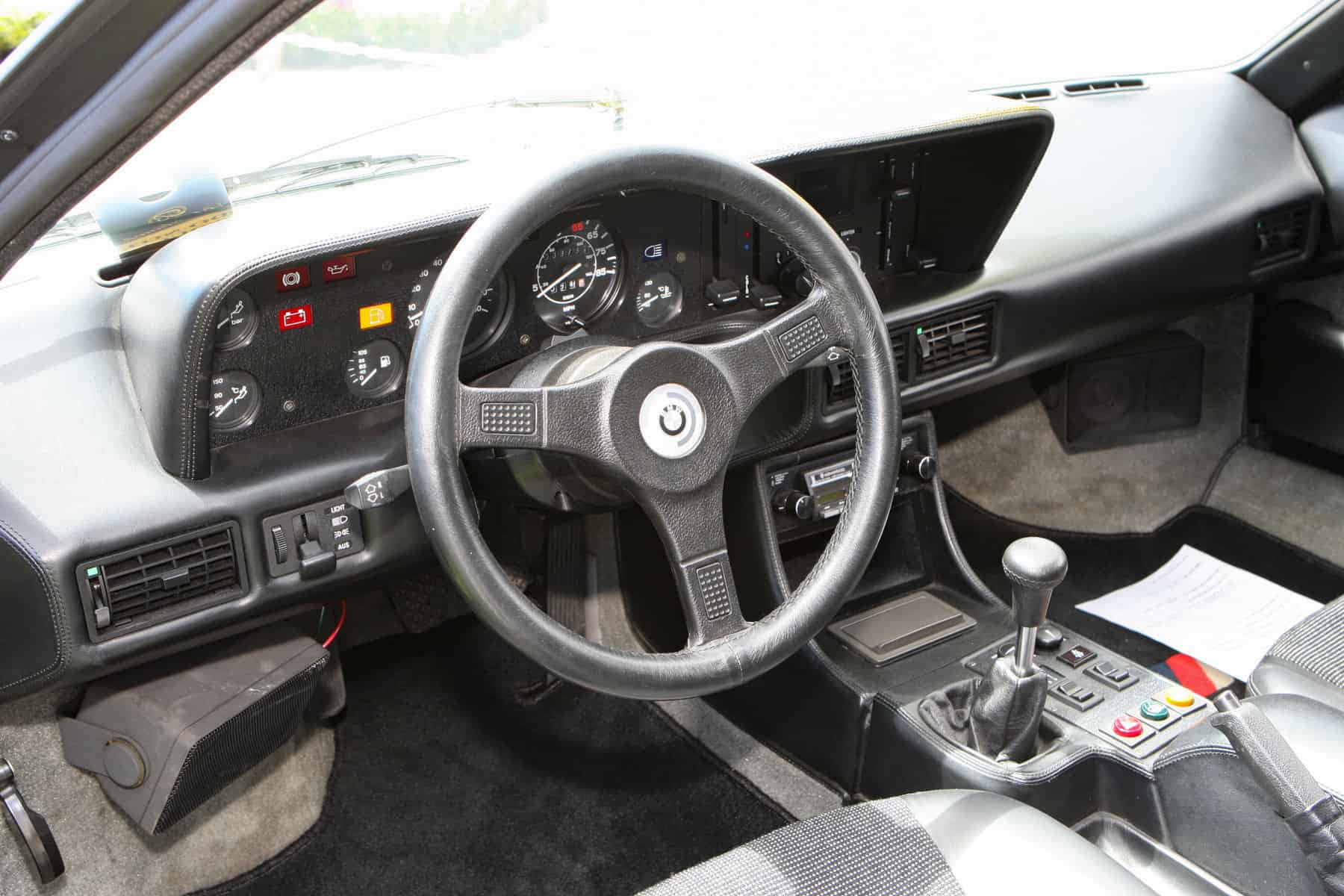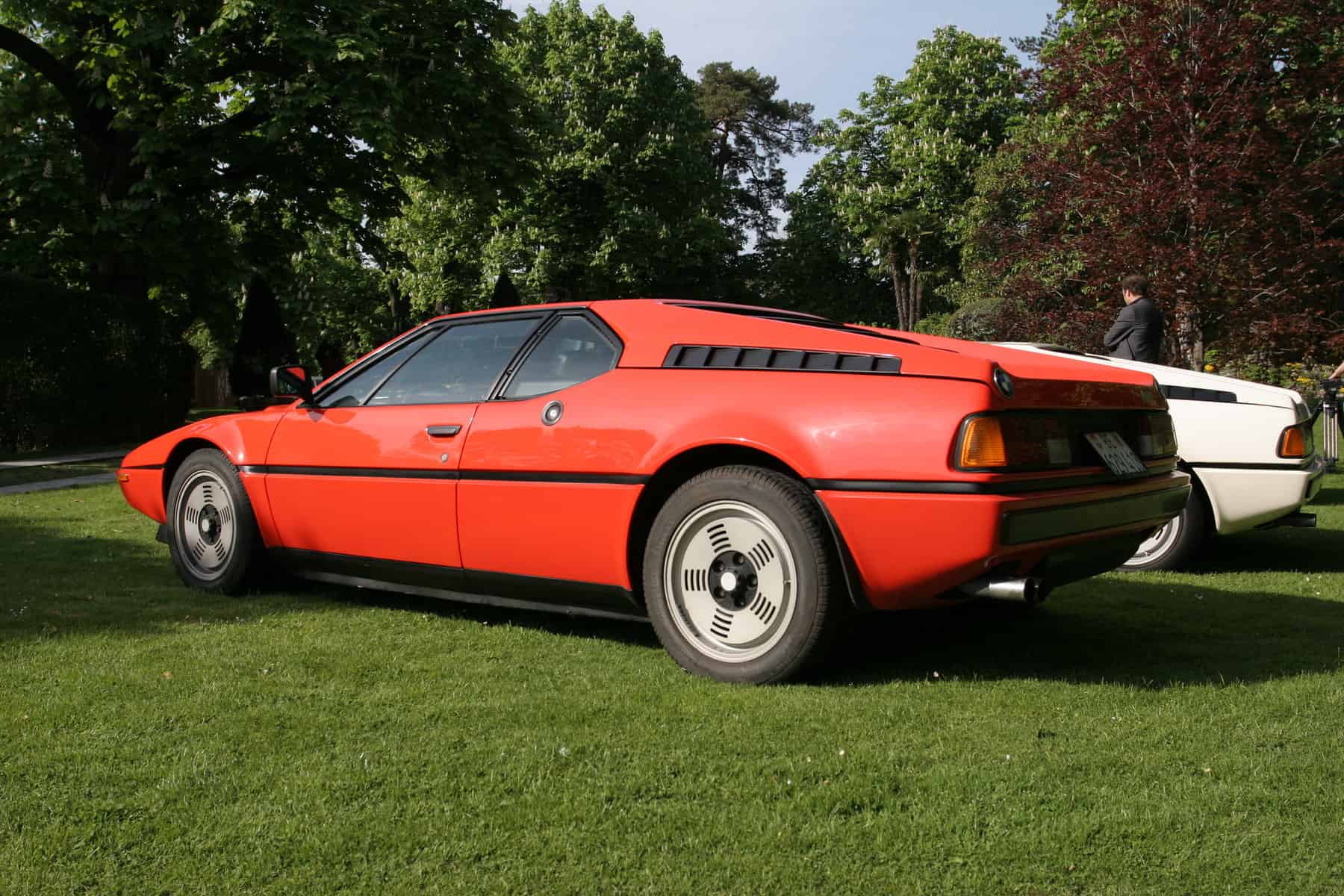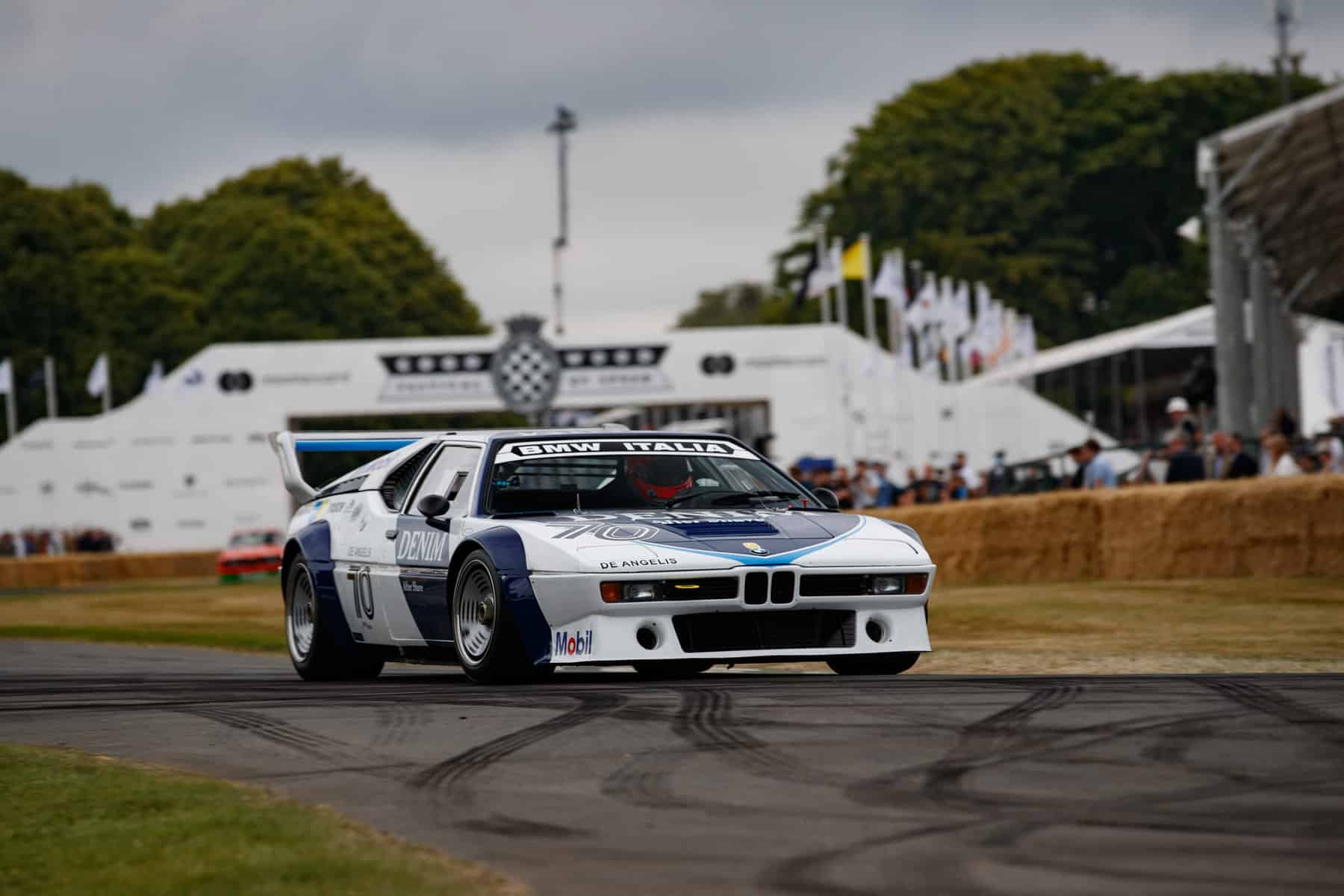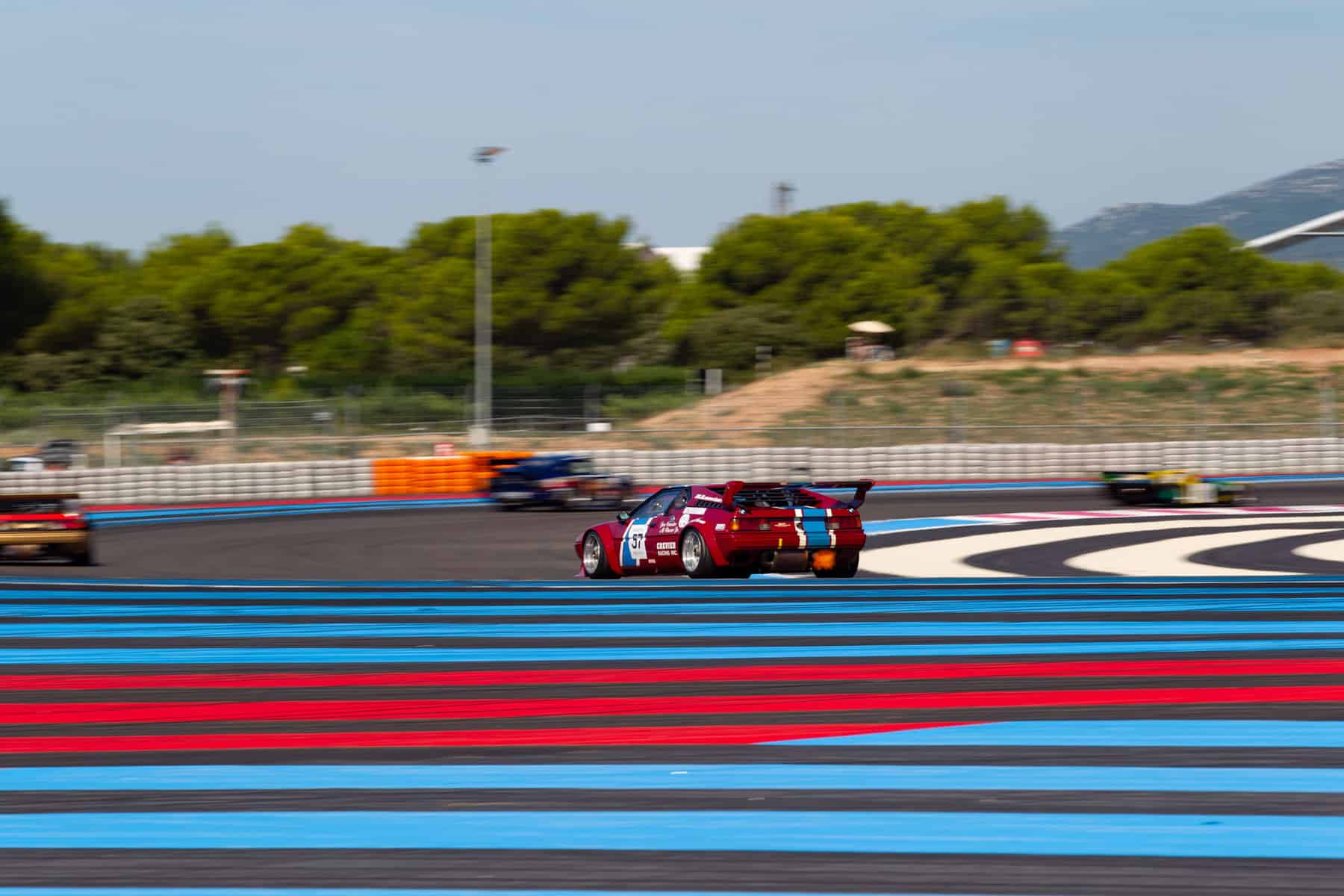BMW M1
"It’s just that good"
WORDS & IMAGES BY: WOUTER MELISSEN
“Iconic Italian styling with German reliability.” This is a concise but accurate description of the BMW M1 given by collector Peter Gleeson. Produced between 1978 and 1981, it has been the only purpose-built supercar offered by the BMW Motorsport, or “M” department, in its fifty-year history. Peter continues: “Add all that with my particular love of BMW Motorsport especially its early years and the M1 sits on a pretty high pedestal for me.”
Having bounced back from the brink of bankruptcy during the 1960s, BMW established its fabled Motorsport department in 1972. Headed by Jochen Neerpasch, it was a racing division first, aimed at developing the 3.0 CS as an all-conquering touring car. For homologation purposes, the resulting 3.0 CSL was also offered as a road car. In Group 2 trim, the competition cars took on Ford in the European Touring Car Championship and then continued as Group 4 and Group 5 GT racers in international sports car events. These would go on to win the Sebring 12 Hours and Daytona 24 Hours outright in the mid-1970s.
At the same time, Porsche had moved up the GT ranks from Group 4 to Group 5 with the 911 Turbo–based 934 and 935 respectively. It was impossible for BMW Motorsport to develop the 3.0 CSL any further, so a plan was hatched to create a road car that could ultimately be developed in a competitive Group 5 racer. As it [if this “it” means “the car,” then put “the car” in here instead] was designed from scratch, the Motorsport department was free to choose the ideal configuration. As a result, the new BMW “E26,” or M1, was to be mid-engined. To some extent, it would be a further development of the Paul Bracq–designed Turbo Concept of 1972, although not a single part was carried over.
For BMW Motorsport, the step from reworking existing road cars to creating a mid-engined supercar from scratch was a significant undertaking and beyond their production capabilities at the time, so help was called in. BMW turned to Lamborghini to obtain the services of chassis engineer Gianpaolo Dallara. With the Miura and Countach, the Italian manufacturer indeed had a lot of experience with mid-engined road cars, so it was an obvious choice. On paper, that is, as the company was also struggling financially and ultimately failed to complete the engineering work after the first seven prototypes had been built. Early in 1978, BMW Motorsport took back control of the now delayed project.
As laid out by Dallara and his engineers, the new M1 was built around a steel, tubular spaceframe chassis. This was constructed in Italy by specialists Marchesi, who were conveniently based out of Modena. Bolted onto all four corners of the lightweight but strong chassis were double wishbones with adjustable springs and dampers. Stopping power was provided by large ventilated disc brakes. The alloy wheels fitted were also of Italian origins, as they were manufactured by Campagnolo. A non-assisted rack-and-pinion steering was used.
For the exterior design, BMW turned to Italdesign’s Giorgietto Giugiaro, who would later be named “Designer of the Century.” He managed to take the familiar BMW cues and the overall design of the Turbo Concept and turn it into a very elegant wedge shape. The sharp nose featured a subtle rendition of BMW’s kidney grille, while the tail sported BMW badges on each corner. The bodywork itself was molded in glass-fiber by another Modena-based specialist, Italina Resina. At Italdesign, the bodywork was fitted to the chassis and the minimalistic interior installed. Once this work was done, the cars were shipped to Baur in Germany.
At Baur, the rolling chassis were fitted with the specifically developed M88/1 engine. This was a further evolution of the 3.5-liter, twin-cam and 24-valve straight-six engine that had powered the works 3.0 CSL racers. It was designed by in-house engine guru Paul Rosche. He retained the 3.5-liter displacement and fitted the engine with Kugelfisher fuel injection. In road trim, it produced 273 hp and 330 Nm of torque. It was mated to a five-speed manual transaxle produced by specialists ZF. The final drive featured a 40 percent limited-slip differential.
Once the work at Baur was completed, the M1s were shipped to BMW Motorsport for the finishing touches. It was an elaborate and time-consuming method to effectively hand-build a sports car. If the M1 had been intended as a road car only, this would have been no problem, but BMW was keen to race the car against the Porsche 935 in the Group 5 category. Although the rules for this class were very lenient, they did specify that the car used had to be derived from one homologated for Group 1, 2, 3, or 4. A big hurdle for BMW was the minimum production requirement of four hundred examples to be eligible for Group 4.
The production road car was introduced in the spring of 1978 and received universal acclaim. “It was the most iconic car of my youth, something I truly thought I would never be able to own, but lusted after for many years,” Peter says. He has owned eight M1s over the years and up until very recently, four at the same time. One was added to his collection on the spur of the moment: “In 2015 I was at the Goodings Pebble Beach auction and two cars from the end was one of the original black M1s. I had no interest in buying another M1 – I had three – but nobody was bidding and the auctioneer looked at me dead straight in the eyes and was like, ‘help Peter.’ Which I did, and ended up buying the car at what most consider a rather fortunate, inexpensive price.”
“On the Monday morning I picked up the M1 I had no knowledge of. I checked the oil, checked the water, and drove 1,000 miles home to just north of Seattle. In over 100-degree heat on Northern California traffic, in and around San Francisco, but the car never missed a beat.” Peter continues: “I do not believe there is another supercar in the world, certainly not from the big Italians of this era or possibly twenty years either side of the M1s production, that anybody would dare to attempt that drive with a car they knew nothing about. It is about the easiest supercar of that era to drive as an everyday car. It’s just that good.”
Among the many other things that Peter finds interesting or quirky about the M1 include: “The massive balance dial for the speakers under the radio – it’s just so ridiculous. The Campagnolo wheels, looking like they are moving when standing still. The trunk space; there actually is some trunk space. The tool kit is awesome. Dry sump on a road car, which has no doubt tested some owners over the years. At 5 feet 8 inches, the driving position is absolutely perfect for me – very Italian in setup, so not ideal for anybody over 6 feet 2 inches or with a long torso, but for me it fits like a glove. The two BMW badges on the trunk [are there] just in case you did not know what it was, which many, it seems, do not.”
Despite production being delayed and then struggling to gain momentum, BMW Motorsport had started work on a Group 4 version of the M1. It would take until December 1, 1980, before the M1 was finally homologated. With nowhere to race the M1 for the foreseeable future, Neerpasch had an inspired solution: a one-make support series for select Formula 1 events. Known as the Procar Championship, it debuted at the 1979 Belgian Grand Prix. Formula 1 drivers were encouraged to race, and the first five places on the grid were reserved for the BMW Motorsport cars, to be driven by the top five qualifiers for that weekend’s Grand Prix. The rest of the field consisted of independent teams, who also predominantly used Grand Prix drivers.
To speed up production of what was now known as the M1 Procar, BMW Motorsport called in help once more. Specialists Osella, BS Fabrications, and Ron Dennis’s Project Four constructed the cars to Group 4 specification. This meant they could also later be used in other events, once they were homologated. A more powerful, 470-hp version of the M88/1 engine was fitted and the weight was brought down to 1,020 kg. The Procar Championship ran for two seasons and was hotly disputed. Scoring four wins in eight rounds, Niki Lauda won the 1979 championship with the Project Four entered M1 Procar. Using a BMW Motorsport fielded M1 Procar, Nelson Piquet won three races and the championship in 1980.
Having gotten a taste of Formula 1 through the Procar Championship, BMW Motorsport agreed to supply four-cylinder, turbocharged engines to the Brabham team. The deal was announced in 1980, and effectively brought an end to the M1’s international racing career before it had even started. From the start of 1981, privateers did race the cars in the Group 4 category with some success. Several independent companies like Sauber and March Engineering ended up building Group 5 versions of the M1, but their racing careers were short and not particularly successful.
The M1 Procar is a popular car in historic racing for good reasons, as Sam Hancock explains: “They are inherently well balanced and almost have a go-kart like feel to them.” The seasoned professional historic racer continues: “I have spent a huge amount of time in two and found a good setup that helps access the kind of performance that it would have had when they were being raced aggressively by top professional drivers in period.” He particularly lauds the chassis: “They have a phenomenal amount of mechanical grip. In tight corners you expect to feel some understeer as you pass through the apexes, but you just don’t. It’s just extraordinary grip and compliance.”
“The only problem is that in those situations, the chassis is almost too good for the engine, and you really find yourself wanting significantly more horsepower when you accelerate out of these corners because there is so much traction. It is often quite difficult to even get the rear tires to spin a little bit and get some oversteer.” Depending on the setup, there can be some understeer or oversteer in high-speed corners but that does not really matter: “With its mid-engine layout, it has got such nice weight distribution, such a nice balance that you get a lot of warning. You always kind of feel that you know what is coming. It does not surprise you and whether you are trying to correct over- or understeer; it’s all pretty intuitive.”
“And then of course you have got that extraordinary noise. They sound great from outside the cockpit to spectators. We all know that.” Sam continues: “The good news is they also sound great inside the cockpit as well.” Shifting through the gears is also a joy: “It is quite an accurate gearbox, not hard or delicate. You do have to work the gearbox quite hard because the power band is quite high in the rev range. When you have got a nice, high revving, responsive, naturally aspirated engine like that, it responds beautifully to your heel and toe on the throttle when you downshift and that creates the nice sounds.”
“The driving position is really nice. You are very low in the car and the steering wheel comes to you and the gear lever is exactly where you want it.” Sam explains: “You also have very good vision. Sometimes when you are very low in a car, your vision is not so great. In the M1, you see everything all the time at all angles; you see all your apexes. It is just one of those cars that seems to have everything in the right place, that allows you just to kind of drive, a little bit more on instinct, which always is a good feeling.”
Sam has also spent some time in a road car: “What I really enjoyed about it was you felt you were at the wheel of something quite special, but when you drive through towns and villages, very few people turn around and pay attention. It is like the discrete supercar if you want. It did not feel too delicate, you could hustle it. Again, I just think the chassis is so good that it could tolerate another 50 to maybe 100 horsepower, much like the race car.”
While developing the M1, the German manufacturer was wise enough to recognize its own limitations and not too proud to call in help. The result is a road-going supercar and a competition car that has stood the test of time remarkably well. In the end just 453 examples were produced, including the Procar/Group 4 competition cars, so they are also very rare.
For fifty years, the M1 was the only dedicated car produced by BMW Motorsport. As part of the Fiftieth Anniversary Celebrations, BMW Motorsport have now produced another proprietary model with the XM. While this high-performance SUV may have many things going for it and also sport two BMW badges on the tail, it is in no way a true successor to the iconic M1. It seems ever less likely that we will see another mid-engine supercar that can inspire an enthusiast to buy one when he already has three in his garage.
